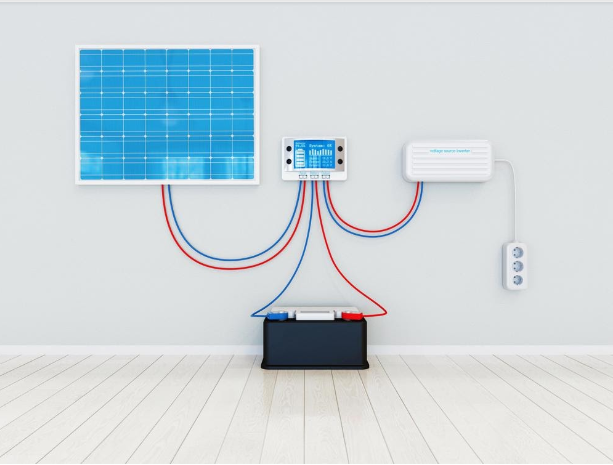The core of a solar inverter is its electronic circuitry and components responsible for converting the direct current (DC) electricity generated by solar panels into alternating current (AC) electricity that can be used to power electrical devices and be fed into the grid. The main functions of a solar inverter include inversion, voltage regulation, and synchronization with the grid.
- DC-AC Inverter:
- The primary function of the solar inverter is to convert DC electricity produced by solar panels into AC electricity, which is the standard form of electricity used in homes and businesses.
- Power Electronics:
- The core of a solar inverter contains power electronic components such as transistors, diodes, and capacitors. These components are responsible for switching and regulating the electrical current to produce a stable and synchronized AC output.
- Maximum Power Point Tracking (MPPT):
- Solar inverters often include Maximum Power Point Tracking (MPPT) technology. MPPT optimizes the electrical operating point of the solar panels to maximize their power output under varying environmental conditions, such as changes in sunlight intensity and temperature.
- Grid Synchronization:
- Grid-tied solar inverters synchronize with the electrical grid to ensure that the electricity generated by the solar panels is in phase with the grid’s AC waveform. This is essential for feeding excess energy back into the grid and for maintaining a stable and reliable power supply.
- Voltage Regulation:
- Solar inverters regulate the voltage of the AC output to meet the required standards for grid-connected systems or to match the voltage requirements of connected appliances and devices.
- Safety Features:
- Inverters typically include safety features such as overvoltage protection, overcurrent protection, and ground fault detection to ensure the safe operation of the solar power system.
- Data Monitoring and Communication:
- Modern solar inverters often come with built-in monitoring systems and communication interfaces. These features allow users to monitor the performance of their solar power system, track energy production, and identify potential issues remotely.
- Cooling System:
- Inverters may include a cooling system to dissipate heat generated during the inversion process. This ensures that the inverter operates within its temperature limits and maintains efficiency.
The core of a solar inverter is designed to efficiently and safely manage the conversion of solar energy into usable electricity. As technology advances, inverters continue to improve in terms of efficiency, reliability, and additional smart features.


